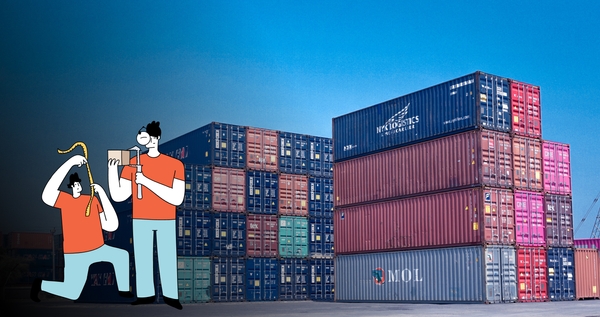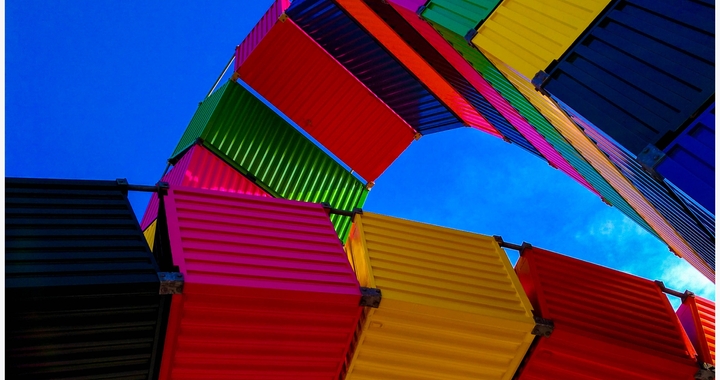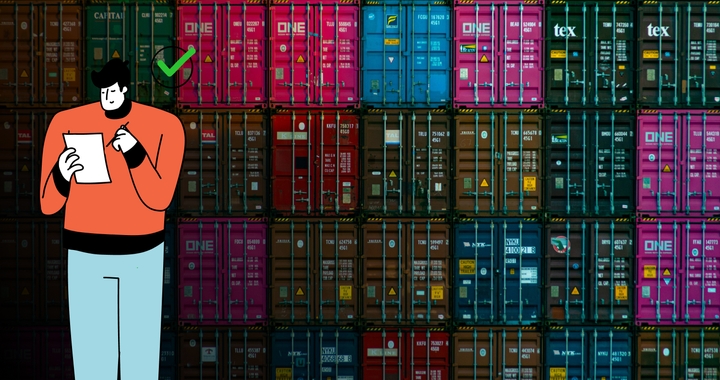Container Size and Capacity

Depending on the goods that you are shipping, you need to find and select the best container capacity to fit your cargo and ensure that it is transported and stored safely.
In this article, we break down all the different container sizes and capacity options that you have in ocean freight so that you can make an informed decision of what to choose for your unique shipment.
12 Types of Shipping Containers

1. 20 Foot Shipping Container (Standard)
If you're looking specifically at a 20ft shipping container then there's no need to worry because this is just one type out of many different sizes when it comes to these units. These boxes come equipped with four hatches along their roof that allow easy access into what would otherwise be an enclosed unit if not used by opening door panels located at either end. Inside, you will find dividers that can be used to separate the space in half if need be with no problem.
2. 40 Foot Shipping Container (Standard)
If you're looking at a 40ft shipping crate, then this isn't any different than what it sounds like because this is just one of many different sizes available when it comes to these units. The 40ft container has a load capacity of about 36 tons or 18 standard size pallets worth of cargo that can be stacked on top.
It's rather spacious inside so you won't have any problems fitting larger items, but don't expect to fit the same number of smaller goods inside as you would with other types. This should always be taken into consideration before renting out for your needs.
3. Small Shipping Container
The smallest shipping container size available for container shipping in ocean freight measures approximately 11 feet long by almost eight feet wide. With the capacity of holding about 20,000 pounds of goods, this container is mainly used for international shipping of small bulk such as food, toys, clothing, and other cargo.
4. Standard Shipping Container
The standard shipping container sizes are the 20-foot and 40-foot containers. They can hold up to 28 tons of cargo and 29 tons of cargo respectively, making them best for medium-sized but heavy items such as tools and machinery.
These containers can be loaded onto rail cars or stacked in a ship's hold with forklifts or cranes. They may also be stacked on top of each other if they're moved to another mode of transportation such as a truck trailer after arriving at their destination port.
5. Reefer Shipping Container
This type of container comes insulated and mechanical equipment regulates its temperature so that it doesn't freeze food or other cargo during transport. It is standard-sized, measuring 40" x 48", and can hold up to 36 tons of freight.
These containers are designed for cold storage or refrigeration purposes so most have thick insulation around the walls and flooring with heavy-duty door seals that secure tightly against weather elements.
6. Reefer Shipping Container (Refrigerated)
Reefer shipping containers are made of thick insulation and durable doors along with their flooring with heavy-duty seals which secure tightly against weather elements. The box is also split down the center giving you two compartments for cargo storage, but most importantly, they come equipped with temperature control systems inside so food or other perishable items won't spoil during transport.
This type of container usually comes in 20ft length units like its standard counterpart because it's designed mostly for cold storage purposes.
7. High Cube Shipping Container
High cube shipping containers measure just over nine feet high by almost eight feet wide, allowing them all kinds of versatility when it comes to their capacity limits in comparison to regular size container vessels.
This means they can be used as small from 20ft truck beds or large from 30ft trailers depending on where you need extra space in transit. They also make great additions in stacking units since these types of boxes are very sturdy and durable.
How many CBM can fit in a 45 high cube container?
A high cube shipping container height of 45 feet with a can fit around 130 CBM of goods. However, the height of each CBM may vary depending on what is being stored. This way it's important to check with your supplier to determine how many you will be able to store in your container before ordering one.
8. Mini Shipping Container
Measuring just over eight feet long by almost seven feet wide, this container is great for small cargo such as personal effects or even bicycles depending on the situation. They are similar to reefer containers in size but have no insulation so they don't come equipped with temperature control features. Like high cube shipping crates, these boxes can be stacked three levels high–more than any other unit of its kind.
9. Open Top Shipping Container
This type of standard-sized box comes open at both ends, which means it's not meant to carry loads that require a secure fit like dangerous chemicals or more fragile items that might break during transit if left exposed while moving around the vessel.
You will find versions of this container that are refrigerated like other types of boxes, but it's primarily used for cargo that has enough room to move around inside the unit during transit.
10. Flat Rack Shipping Container
The name speaks volumes when you're looking at a flat rack shipping crate because these containers only have space on top allowing items to be stacked high above them. They can hold up to 30 tons or 15 standard-size pallets worth of goods, which is why they are so versatile in their capacity limits.
Although remember if there are no contents being moved along with your shipment, then the load will need an escort truck instead so any company renting out one should inform you beforehand about additional charges involved before signing off on anything official.
11. Multi-Deck Shipping Container
These types of standard-sized containers are made up of two or more decks with space in between each level for cargo to be stacked on top. They can hold about 30 tons worth of goods and come equipped with partitions that divide the levels inside, making them great for moving multiple forms of bulk-like cars or large appliances.
12. ISO Shipping Container
ISO container dimensions are a maximum of 20 or 40 feet in length, and they have a width that is either eight feet wide (known as an "eight-footer") or nine and a half feet wide ("a nine footer"). These dimensions make them suitable for most modes of transport.
In addition to these general container sizes, there are also weatherized ISO shipping containers which add an extra layer of protection from rain and wind when transporting goods by sea.
Considering the Cargo Weight Limits Per Country

When shipping goods from one country to another, it’s important to know the certain rules and regulations around size limits or weight restrictions on items being shipped from both countries involved in trade negotiations.
For example, if you were importing a shipment from China to the US you would be required to know that China has a limit of 20 feet and 40 tons for their containers. On the other hand, in America, there is a limit of 20 feet and 48 tons. Having this information would be important to know so you can plan ahead on what size of the container is necessary for shipping your goods from China over to the US.
Furthermore, many countries set weight limits that are not always standard across all ports, which means some companies may end up with excess container capacity after picking up their cargo at one port but it gets delivered into another country where there is less space allowed on ships.
Goods Packaging May Require Container Volume Adjustments

Another thing you have to keep in mind is the volume of your packaging. When choosing the right container size, always include your packaging specifications in your measurements. Some goods may require more secure packaging than others, and as you're adding more weight to the container, then it's also going to increase in size.
For example, if you’re shipping high-value electronics and small sensitive items, there need to be extra precautions taken when shipping them. If a retailer has an order coming in with computers or cameras, they won't typically use one big box because this could lead to damages during shipment.
They will typically package each individual item so that even though they lose space inside the bigger box by packaging smaller boxes instead of packing everything into one large box, it benefits them since these items can get damaged easier than other types of products.
A Final Note
Containers are specifically for certain product quantities, weights, and sizes. It's important to communicate with your freight forwarder about these specifications so you don't end up paying more than what was expected for the shipment.
Remember that shipping container dimensions do affect the cost of your shipment. This is why it's important that you and your freight forwarder know exactly how much of each product will be in the order (by weight).


